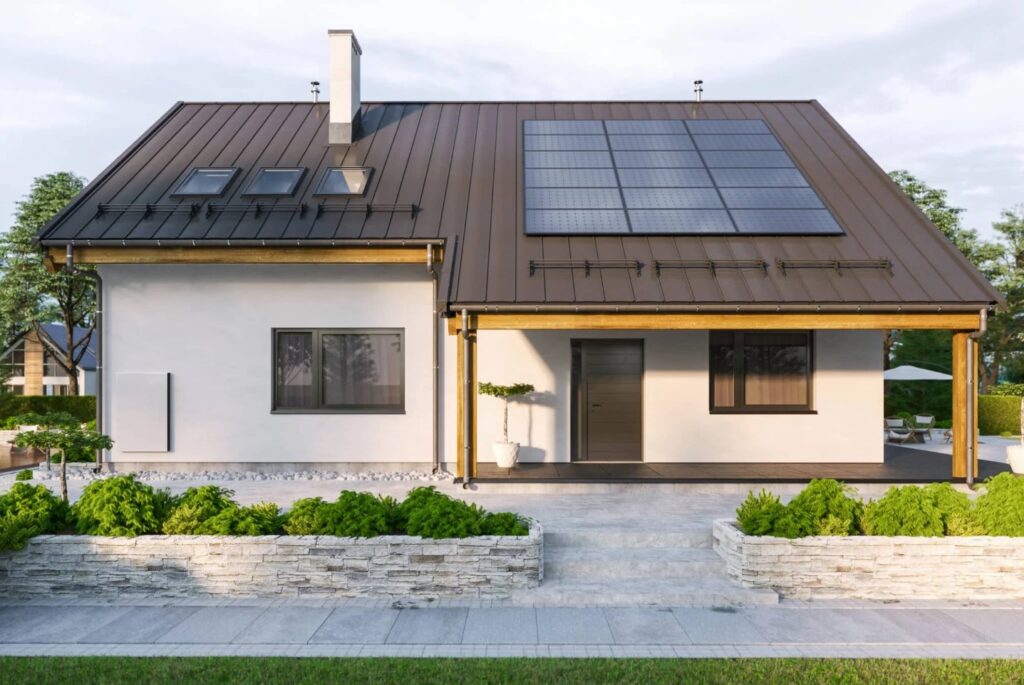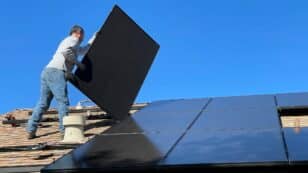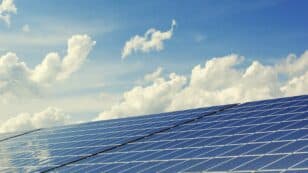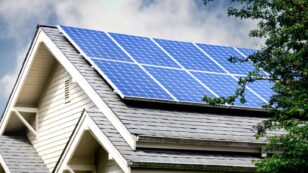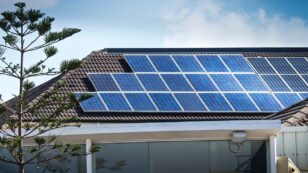
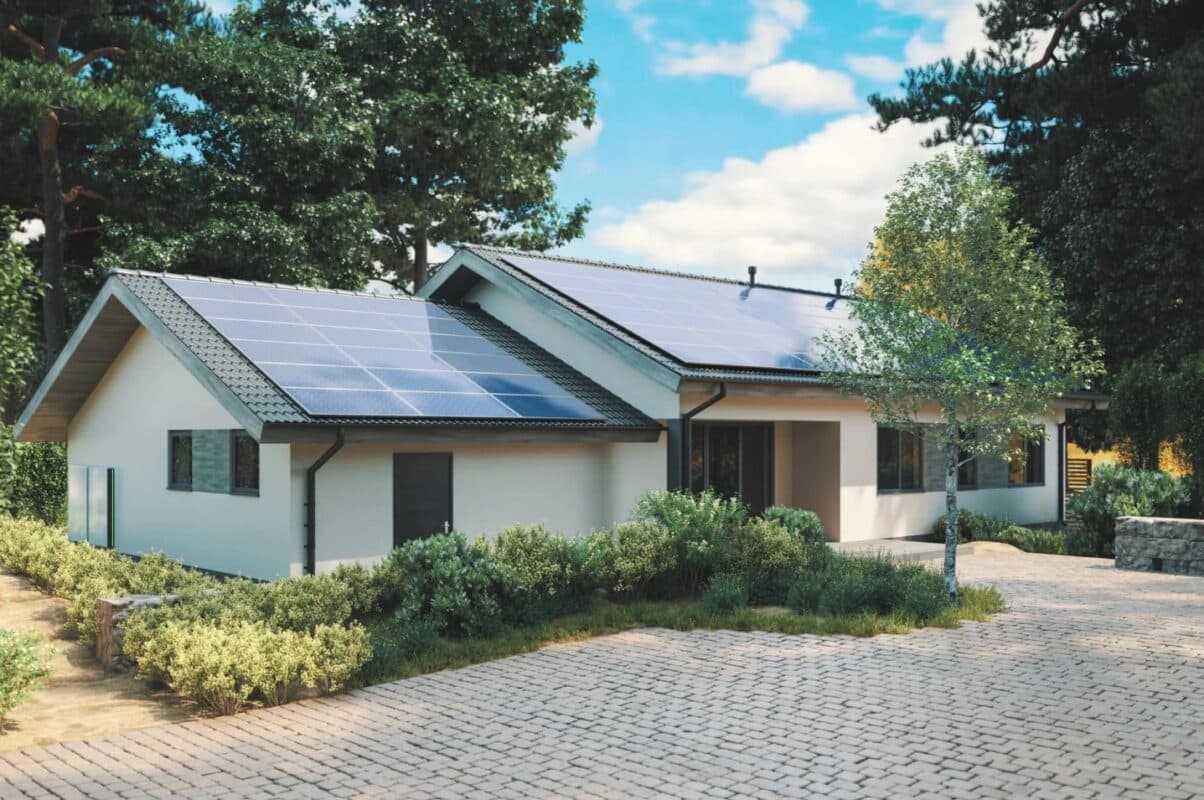
Solar Loans Guide (Rates, Tips & Comparisons) (2024)
Here’s what we’ll cover in this guide:
- How solar loans work
- The differences between solar loans and leases
- How to choose the best solar loan for you
Each product and or company featured here has been independently selected by the writer. You can learn more about our review methodology here. If you make a purchase using the links included, we may earn commission.
How Do Solar Loans Work?
So, how do solar loans work, exactly? In essence, they operate in the same way as any typical loan for a home or car would: After selecting a provider and solar panel type to install, you take out the loan to purchase a solar energy system and repay the borrowed money over time.
The energy savings provided by the solar panel system, plus the federal solar tax credit, can be used to pay back that loan plus a bit of interest. The typical solar loan payback period ranges between five and 10 years, allowing a borrower to enjoy over a decade of free renewable energy generated by their system after paying it off.

SunPower

Nationwide Service
Average cost
Pros
- Most efficient panels on the market
- National coverage
- Cradle to Cradle sustainability certification
- Great warranty coverage
Cons
- Expensive
- Customer service varies by local dealer
SunPower designs and installs industry-leading residential solar and storage solutions across all 50 states. With a storied history of innovation dating back to 1985, no other company on this list can match SunPower’s experience and expertise.
SunPower earns its position as the top national installer on our list for a handful of reasons: It installs the most efficient solar technology on the residential market, offers the most expansive service area and backs its installations with a warranty well above the industry standard. All the while, SunPower pioneers sustainability efforts within the industry.
If that weren’t enough, SunPower systems come packaged with products all manufactured in-house by its sister company, Maxeon. This means that your panels, solar cells, inverters, battery and EV chargers are designed to work together and are all covered under the same warranty.
SunPower’s biggest downside? Its high-efficiency panels are considerably more expensive than most of its competitors’ products. However, its powerful panels are workhorses that make up for the initial cost with more backend production (think about this like spending more money for a car that gets more miles per gallon).
Facts and Figures: SunPower
| EcoWatch Rating |
|---|
| Better Business Bureau (BBB) Rating |
| Year Founded |
| Average Cost ($-$$$$$) |
| Solar Services |
| Brands of Solar Equipment Offered |
| Warranty Coverage |
| 5 |
| A+ |
| 1985 |
| $$$$ |
| Solar Panels, Solar Batteries, EV Chargers, System Monitoring |
| SunPower Panels |
| 25-year all-inclusive warranty |

Blue Raven Solar

Regional Service
Average cost
Pros
- Industry-leading in-house financing
- Competitive pricing
- Excellent reputation
Cons
- Doesn't offer solar batteries (coming 2022)
We like Blue Raven Solar because it understands that, for most homeowners, the cost of solar presents the biggest barrier to entry.
For that reason, Blue Raven Solar developed an innovative solar financing plan that offers in-house, flexible, zero-money-down options. The results speak for themselves, as Blue Raven Solar is now one of the fastest-growing solar companies in the nation and was recently acquired by SunPower. Its BluePower Plus+ plan (exclusive to Blue Raven) mimics the flexible structure of a lease while still providing the greatest benefits of owning your system.
Eligible homeowners enjoy 18 months of solar power before having to pay their first bill. When coupled with the federal solar investment tax credit (ITC), the initial energy savings can offset more than a third of the overall cost of a system before requiring a dollar down.
In contrast, other installers can only offer similar financing through solar leases, PPAs or third-party providers (such as Mosaic or Sunlight). Third-party loan providers can complicate the process, while opting for a loan or PPA will disqualify you from some of solar’s biggest benefits (additional property value, federal solar tax credit and local solar incentives).
Facts and Figures: Blue Raven Solar
| EcoWatch Rating |
|---|
| Better Business Bureau (BBB) Rating |
| Year Founded |
| Average Cost ($-$$$$$) |
| Solar Services |
| Brands of Solar Equipment Offered |
| Warranty Coverage |
| 4.5 |
| A+ |
| 2014 |
| $$ |
| Solar Panels, System Monitoring |
| Trina Solar, Canadian Solar, SolarEdge, Silfab, SunPower |
| 25-year manufacturer warranty; 10-year workmanship warranty, 2-year production guarantee |
Solar lending comes in many different forms and can finance 100% of the cost of a solar installation. Many loan providers offer low monthly payments or zero-money-down options depending on your situation. Here are the most common types of loans:
- An unsecured personal loan
- A home equity loan or line of credit
- In-house solar financing through your solar installation company
For the most part, the terms and conditions of solar borrowing reflect those of any other standard loan. More specifically:
- Securing a lower interest rate means having a lower overall cost to borrow.
- A shorter loan term generally means higher monthly loan payments but a lower overall cost to borrow.
- The loans available to you will vary in interest rates, term lengths, loan amounts, credit requirements, etc.
Overall, solar loans provide a wonderful opportunity for customers to enjoy the perks of system ownership without having to spend an uncomfortable amount of money upfront. Though the overall value loans provide is slightly lower than a cash purchase, the overall savings are significantly greater than a solar lease.
Which Is Better: Solar Loans or Solar Leases?
Loans and leases are very different, starting with the ownership of the solar panels themselves. When you lease a solar energy system, your solar provider retains ownership. This allows your provider to enjoy the benefits of ownership, namely, cashing in on the federal tax credit.
Leasing solar equipment can also complicate selling a home, and getting out of a solar lease comes with hefty cancellation fees. In our experience, most solar horror stories result from unethical solar companies pushing leases on unassuming customers under the guise of “free solar panels.” Customers can end up trapped in a bad contract with no way out.
Don’t let that scare you off of a solar lease, however, if that’s what you can afford. Just be sure to do your research. Though solar leases can save customers money and lower their reliance on fossil fuels, the long-term value of a solar lease is far lesser than the long-term benefits of system ownership. When you cover your solar energy system cost with a loan, you can still enjoy the following:
- A return on investment (ROI) via energy savings
- Value added to your property from solar
- Money back via the federal solar tax credit
- Local tax incentives for system ownership, including property and sales tax exemptions

How Do You Choose the Right Solar Loan?
There are a number of factors to keep in mind when considering the best solar loan for your needs, including:
- Monthly payment amount: If you end up choosing a shorter loan term (i.e., a loan that you must pay off in a shorter amount of time), your monthly payments will probably be higher. The overall cost of the loan will be lower, but it’s nevertheless important to consider the impact on your household budget.
- Down payment amount: Depending on the loan you choose, you may or may not be required to put down an initial payment on the solar panels. Generally, larger down payments will mean lower interest rates and a more valuable loan overall.
- Fees: Some solar lenders may charge prepayment penalties or monthly fees in addition to your monthly principal and interest payments. Always make sure you get fee information upfront, so as to ensure there are no surprises on your loan statement.
If you are still researching how much a solar system would cost for your home, you can click below to connect with an EcoWatch-vetted installer and get a free estimate.
What Is the Difference Between Secured Solar Loans and Unsecured Solar Loans?
Another important factor to consider is whether you’ll want a secured loan or an unsecured loan. Let’s break it down:
- Secured loans are usually connected to some piece of collateral, such as a piece of equity in your house; this provides the lender with some protection. If you fail to make your payments, the lender can claim this piece of collateral. Because the lender has some insurance, secured loans usually offer lower interest rates and more favorable terms overall.
- Unsecured loans do not offer any collateral or security provisions to the lender. They represent a greater risk on the lender’s part, and therefore come with higher interest rates and less flexibility.
A secured loan is generally the smarter choice when possible. However, if you don’t have enough equity in your home (or aren’t in a place to risk it), an unsecured loan may be the wiser decision.
How Do I Find the Best Solar Loan Rates?
Confident you know the best type of loan for your situation? Now comes securing the lowest interest rate possible. Most solar loan interest rates, such as those from lender LightStream, range from 3.99% to 16.99%. But it is possible to get lower rates. Here are a few tips to keep your rates as low as possible when financing a solar panel system:
- Shop around: It’s usually best not to go with the very first lender you find. Spend some time shopping around and comparing rates. Most lenders will give you a free quote that’s good for a number of days while you compare offers from other companies. Have a plan before you start getting quotes.
- Have someone co-sign: Having a co-signer on your loan — especially one with excellent credit — makes a lender far more likely to lower your interest rate.
- Improve your credit score: The higher your credit score, the lower your interest rate will be. Small changes to your credit score before getting a quote can save you thousands in the long run. Here are a few tips to do so:
- Pay back any old debts and credit card balances
- Confirm your revolving credit limit is at its maximum
- Be sure not to miss any monthly bill payments
- Don’t open any new credit cards near or during the process of applying for a solar loan
Local Solar Loan Programs
Given the undeniable environmental and financial benefits of solar energy efficiency, federal and local government bodies often launch programs to help make solar financing more feasible for their residents.
Homeowners who are interested in going solar should also know about Property Assessed Clean Energy (PACE) loan programs. According to the Department of Energy, PACE programs “allow a property owner to finance the up-front cost of solar energy or other eligible improvements on a property and then pay the costs back over time through a voluntary assessment.”
What makes these programs unique is that the assessment is tied to the property itself, not to the individual. PACE financing legislation exists in some form in 36 states plus Washington D.C. A handful of states have separate solar loan programs and rebates for homeowners. Here are some current programs worth knowing about:
| State | Solar Loan Program | Maximum Loan Amount | Interest Rate | Longest Repayment Term |
| Connecticut | Energy Conservation Loan Program | $25,000 | 0% to 7% | 12 years |
| Louisiana | Home Energy Loan Program (HELP) | $6,000 | 2% | 5 years |
| Michigan | Michigan Saves Home Energy Financing | $50,000 | 4.44% to 7.90% | 15 years |
| North Carolina | State-regulated municipal loan options | Varies | Up to 8% | 20 years |
| Ohio | Energy Conservation for Ohioans (ECO-Link) Program | $50,000 | 3% APR reduction on bank loans | 7 years |
Additionally, certain cities, municipalities and even utility companies may offer low-interest solar loans. We recommend researching your specific area before turning to banks or credit institutions. The DSIRE database is a helpful resource.
Where Can You Get a Solar Loan?
If your state doesn’t have its own solar energy loan program or you’re not eligible for enrollment, there are plenty of other places to get solar loans. Any of the best solar companies will be sure to assist you in finding a loan partner, but some other places to check include:
- Credit unions
- Lending institutions
- In-house financing options through your solar installer
Some installers use a third-party solar lender, but some, such as Blue Raven Solar, offer innovative financing directly. We can’t emphasize enough the importance of shopping around and comparing rates and offers before deciding on which solar lender is the best fit for your needs.
To get started with a free quote and find solar loan information from a top solar company in your area, you can click below to connect with an EcoWatch-vetted installer and get a free estimate.
FAQs: Solar Loans
As is so often the answer with questions related to solar energy, it depends. Solar loans help you increase the value of your property, lower electric bills, minimize your impact on the environment and claim some tax incentives. However, paying for your solar panel installation upfront with cash offers the best return on investment.
Rates for most loan types are between 3.99%-16.99% but will vary depending on location, credit score, loan lender and more. Remember to always shop around and check your local government, utility company and solar installers to ensure you find the lowest interest rate possible.
If you have sufficient home equity, a secured loan is often the most cost-effective approach. If you don’t have sufficient home equity, an unsecured loan can work just fine.
Typically, yes, you can buy a solar battery with a solar loan. But make sure you double-check the terms of your loan.
Comparing authorized solar partners
-
- Most efficient panels on the market
- National coverage
- Cradle to Cradle sustainability certification
- Great warranty coverage
- Expensive
- Customer service varies by local dealer
A+Best National Provider1985SunPower Panels25-year all-inclusive warranty
Having trouble deciding? Click below and use our process to receive multiple quotes instead:

 233k
233k  41k
41k  Subscribe
Subscribe 
